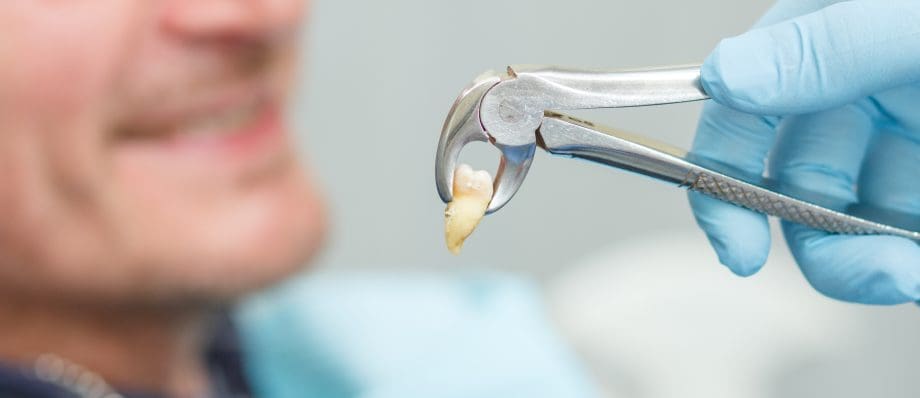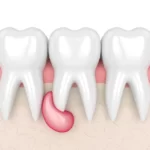Tooth extraction is a dental procedure that involves the removal of a tooth from its socket in the jawbone. While it may sound daunting, tooth extraction is a common and often necessary dental procedure that can help alleviate a variety of dental issues, including tooth decay, gum disease, and overcrowding.
In this article, we will discuss everything you need to know about tooth extraction, including the reasons for extraction, the different types of extractions, what to expect during and after the procedure, and how to care for your mouth during the healing process.
Why is Tooth Extraction Necessary?
There are several reasons why a tooth may need to be extracted. Some of the most common reasons include:
- Tooth Decay
- Gum Disease
- Overcrowding
- Impacted Teeth
- Wisdom Teeth
Tooth Decay
When tooth decay reaches a point where it cannot be treated with a filling or root canal, tooth extraction may be necessary to prevent further damage and infection.
Gum Disease
Severe gum disease can cause teeth to become loose and may require extraction to prevent further damage to the gums and other teeth.
Overcrowding
Teeth may need to be extracted to make room for orthodontic treatment, such as braces or Invisalign.
Impacted Teeth
When a tooth is unable to fully emerge from the gums, it is considered an impacted tooth. This can cause pain, infection, and other dental issues and may require extraction.
Wisdom Teeth
Wisdom teeth, also known as third molars, often require extraction because they can cause pain, infection, and other dental issues as they emerge.
Types of Tooth Extractions
There are two main types of tooth extractions: simple extractions and surgical extractions.
- Simple Extractions
- Surgical extractions
Simple Extractions
Simple extractions are performed on teeth that are visible in the mouth and can be easily removed. During a simple extraction, the dentist or oral surgeon will use a tool called an elevator to loosen the tooth before removing it with forceps.
Surgical extractions
Surgical extractions are more complex and are typically necessary when a tooth is impacted or broken off at the gum line. During a surgical extraction, the dentist or oral surgeon will make a small incision in the gum to access the tooth and may need to remove bone around the tooth to extract it.
What to Expect During a Tooth Extraction Procedure
Your expectations from tooth removal are described in three steps:
Before the Procedure
Before the tooth extraction procedure, your dentist or oral surgeon will perform a thorough examination of your mouth, including X-rays to determine the best course of action. They will also discuss the procedure with you and answer any questions you may have.
If you are undergoing a surgical extraction, you may be given a local anesthetic to numb the area around the tooth. In some cases, general anesthesia may be used, which will put you to sleep during the procedure.
During the Procedure
During the tooth extraction procedure, your dentist or oral surgeon will make a small incision in the gum to access the tooth. If necessary, they may remove bone around the tooth to extract it. Once the tooth has been removed, they will clean the area and may stitch the gum back together.
After the Procedure
After the tooth extraction procedure, you will be given gauze to bite down on to help stop any bleeding. You may also be given pain medication or antibiotics to help with any pain or infection.
It is important to avoid smoking, using straws, or eating hard or crunchy foods for at least 24 hours after the procedure to prevent any further damage or infection to the area.
Caring for Your Mouth After a Tooth Extraction
Proper care after a tooth extraction is crucial to ensure proper healing and prevent infection. Here are some tips to follow:
- Bite down on gauze for at least 30 minutes after the procedure to help stop any bleeding.
- Apply an ice pack to your face for 10-20 minutes at a time to help reduce swelling.
- Take any prescribed pain medication as directed by your dentist or oral surgeon to manage pain and discomfort.
- Avoid smoking and using straws for at least 24 hours after the procedure, as the sucking motion can dislodge the blood clot and delay the healing process.
- Eat soft foods and avoid chewing on the side of your mouth where the extraction occurred for a few days.
- Rinse your mouth gently with warm salt water several times a day to help keep the extraction site clean and prevent infection.
- Brush and floss your teeth as usual, but avoid the extraction site for the first day or two after the procedure.
- Attend any follow-up appointments with your dentist or oral surgeon to monitor the healing process and ensure proper recovery.
Possible Complications
While tooth extraction is generally a safe and routine procedure, there are some possible complications that can occur, including:
- Dry Socket
- Nerve Damage
- Infection
- Bleeding
Dry Socket
This occurs when the blood clot that forms in the extraction site becomes dislodged or dissolves before the wound has healed. It can cause pain, bad breath, and infection.
Nerve Damage
If the tooth extraction procedure involves the removal of a tooth close to a nerve, it can result in nerve damage that can cause numbness, tingling, or loss of sensation in the tongue, lips, or chin.
Infection
Infection can occur if bacteria enter the extraction site, causing toothache, pain, swelling, and other symptoms.
Bleeding
While some bleeding is normal after a tooth extraction, excessive bleeding can occur if a blood clot fails to form or becomes dislodged.
If you experience any of these complications or any other unusual symptoms after a tooth extraction, contact your dentist or oral surgeon immediately.
Conclusion
Tooth extraction is a common and often necessary dental procedure that can help alleviate a variety of dental issues, including tooth decay, gum disease, overcrowding, impacted teeth, and wisdom teeth. By understanding the reasons for extraction, the different types of extractions, and what to expect during and after the procedure, you can prepare yourself for a successful recovery. Remember to follow your dentist or oral surgeon’s instructions for proper care after the procedure and to contact them immediately if you experience any complications or unusual symptoms.





